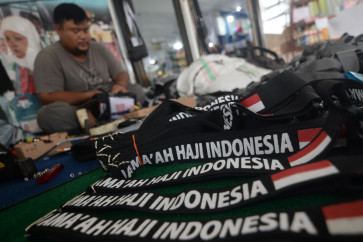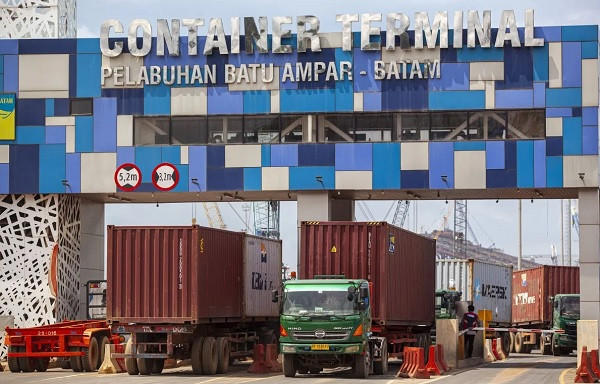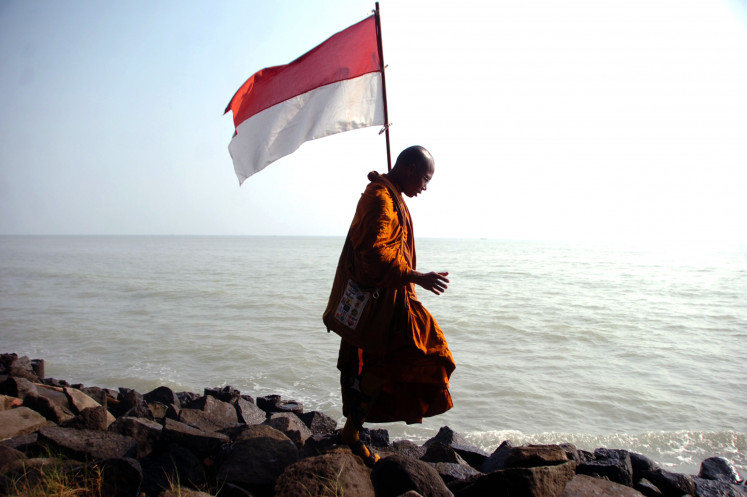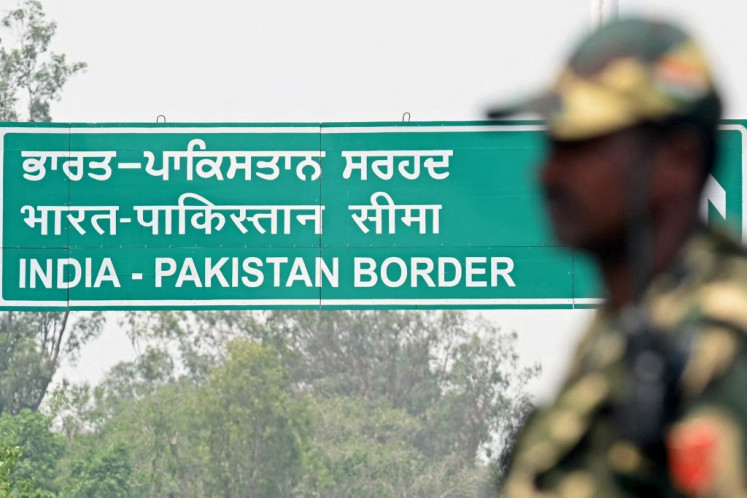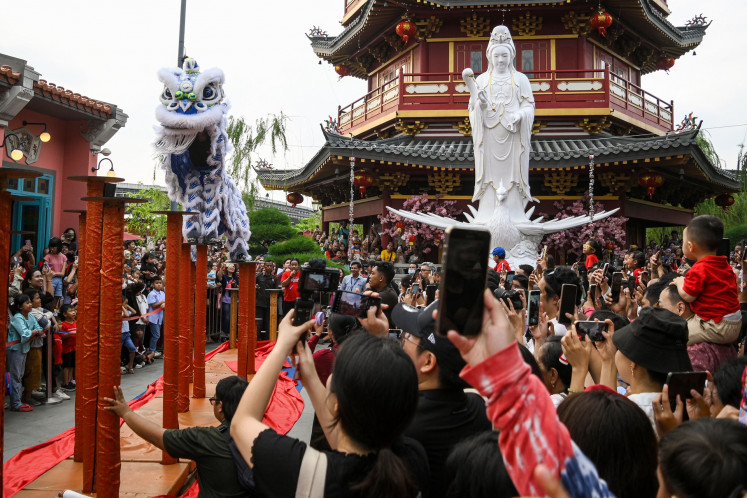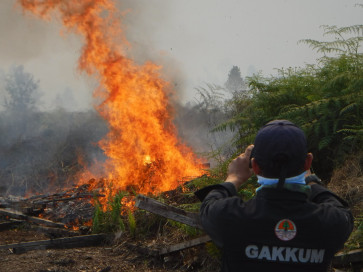Beyond swidden agriculture: Rethinking approach to fires
Change text size
Gift Premium Articles
to Anyone
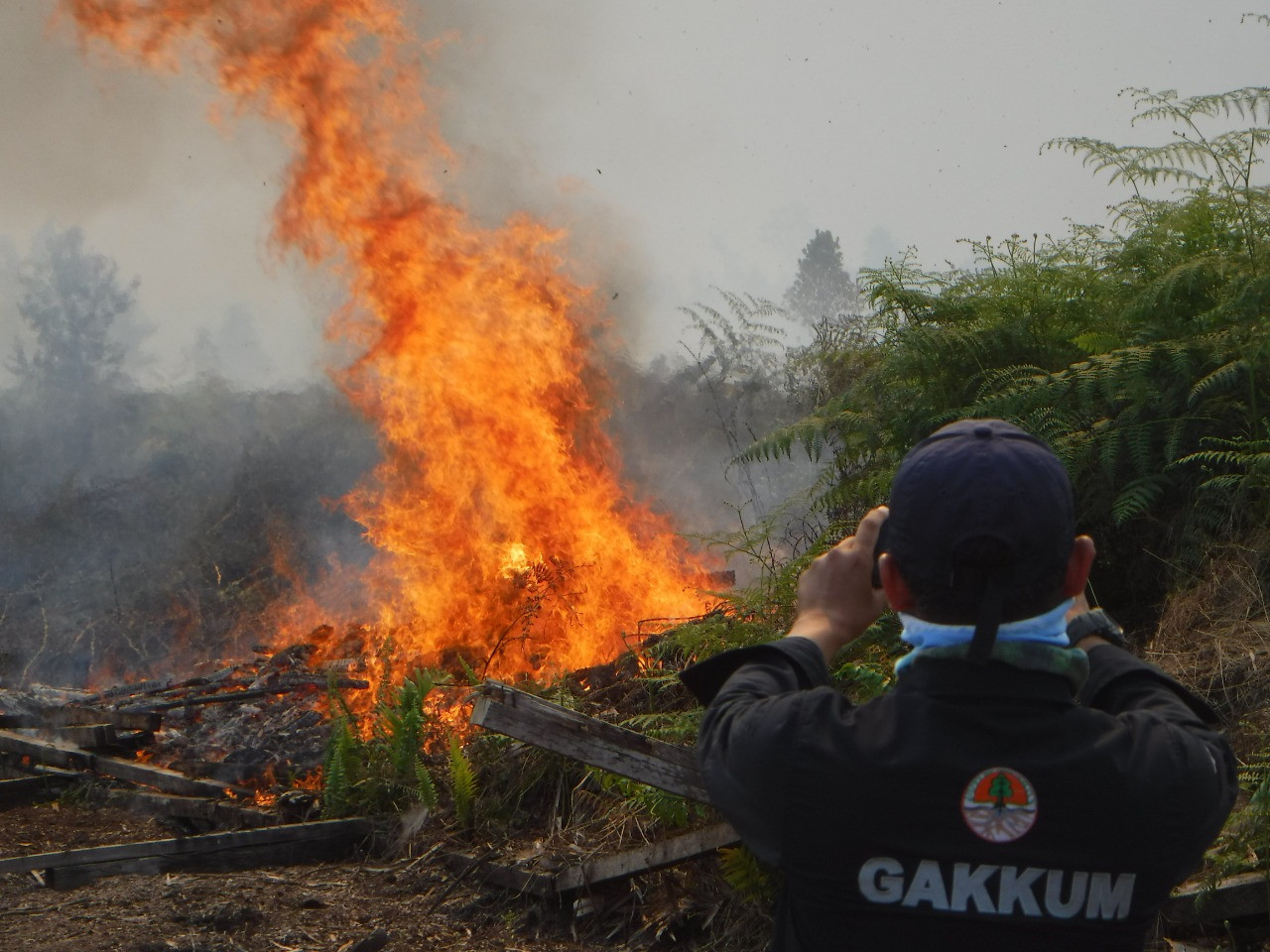 An officer with the Environment and Forestry Ministry's law enforcement directorate general takes a photo near a wildfire location in Kubu Raya regency, West Kalimantan. (Courtesy of/Environment and Forestry Ministry)
An officer with the Environment and Forestry Ministry's law enforcement directorate general takes a photo near a wildfire location in Kubu Raya regency, West Kalimantan. (Courtesy of/Environment and Forestry Ministry)
T
he use of fire in swidden agriculture is not as simple as just burning down the forest. It presents an interconnected relationship between ecological knowledge and socialcultural values. However, swiddening communities are often accused as being one of the contributors to catastrophic fires in Indonesia. In addition, they often become victims of reactive fire policies (e.g. the prohibition of using fire).
Swidden agriculture is part of the livelihood (either fully or partly) for 14 to 34 million rural people in Southeast Asia. Fire swiddening has long been a cornerstone of agricultural practices in Indonesia. In general, swiddening is a practice of subsistence agriculture (e.g. to plant rice) to feed local communities. It involves converting secondary forest areas into fields for planting crops using slash and burn techniques to clear the area of trees or other vegetation. This practice is very common in Kalimantan, including by indigenous Dayak communities. For them, ecological aspects and sociocultural values are fundamental factors in practicing swidden agriculture.
Ecological aspects in practicing swidden agriculture among Dayak communities represents their perception of the conditions of the forests and soils around them. They hold ecological knowledge of rotating the conversion of secondary forest into rice fields based on time periods (e.g. yearly or every five years), so that vegetation of plants and trees in abandoned fields can grow back. Depending on the interval between rotations, swiddening provides time for ecosystems to naturally restore themselves, for instance by using chemical fertilizer.
When using fire to convert forests into fields, the burned remnants are used as natural fertilizer to improve yields. Burning is also used to reduce weeds and pests in the period of rice growth, hence reducing the need for chemical fertilizers, pesticides and herbicides and thereby bringing down production costs. The knowledge of using fire in swiddening has been passed down through generations, along with sociocultural values to conduct the practice in an environmentally and socially sustainable way.
Sociocultural values can be seen in the way the communities practice burning to clear land. Community members who own adjacent fields usually form groups to create firebreaks by cleaning the flammable vegetation on the sides of the fields. Such firebreaks are built to reduce the risk of fire spreading to other lands. This practice is derived from the customary law that stipulates sanctions if fire spreads to other lands, forests or rubber plantations. In short, the values, including the indigenous rules, sanctions and rituals, indicate that these communities have social and cultural awareness in using and managing fires.
Reflecting on the meaning of the use and management of fire in Dayak’s perceptions, we need to rethink the solutions to overcome fires, especially pertaining to swidden agriculture. Reactive solutions have proven to be less effective in dealing with recurrent annual fires.
Economy-based solutions that are often offered — for example, providing excavators for communities to clear land without burning, hiring locals as firefighters to prevent swiddening or creating lowland permanent rainfed ecosystems — are not solutions that have holistically assessed the community’s perception of swidden agriculture. Economic-based solutions might work well for communities whose perceptions are dominated by profit orientation.

